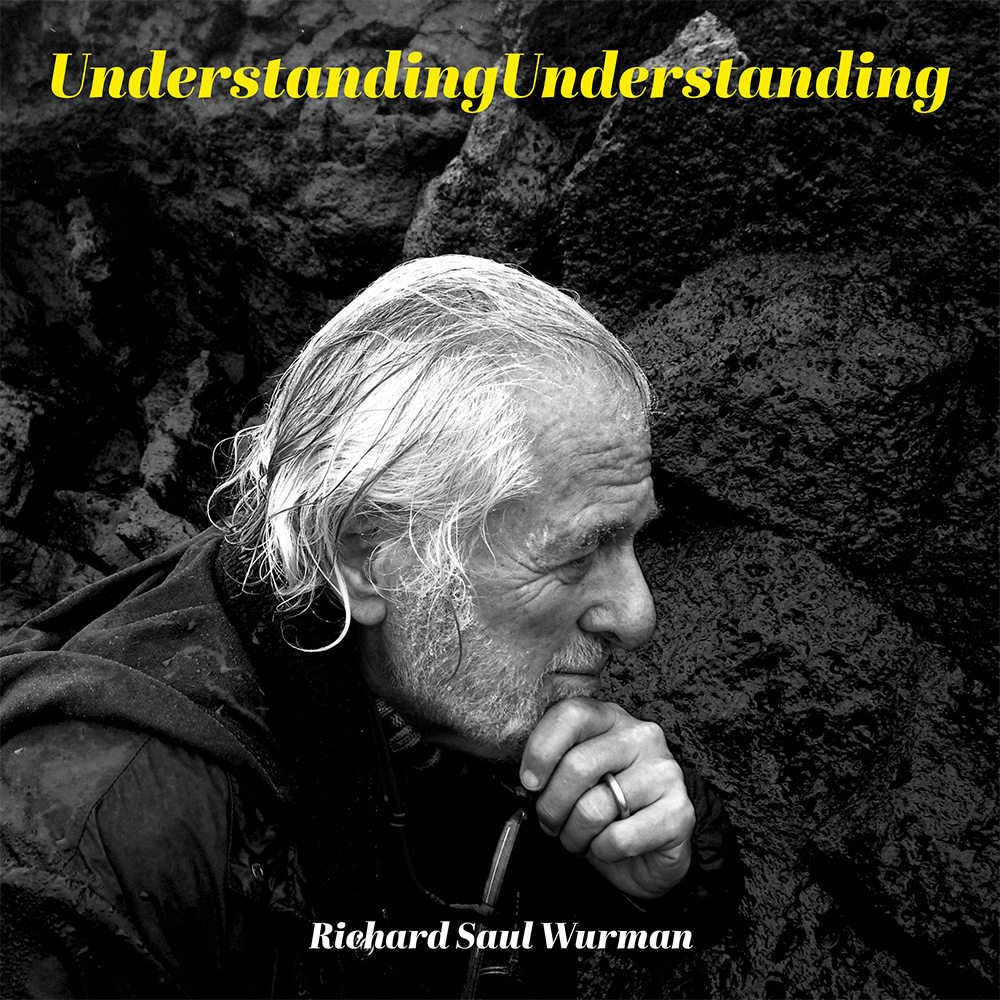
TED founder Richard Saul Wurman’s new book, Understanding Understanding, reminds AIGA executive director Julie Anixter that while mastering any discipline is a difficult task, designers might be the ones best suited to guide the journey from inquiry to insight.
A long, long time ago, like 40 or 50 years ago, information was messy. At that point in history, the words “information” and “architecture” didn’t know each other very well. But our understanding of these two terms, especially when applied together, would soon change.
Richard Saul Wurman studied architecture at the University of Pennsylvania, earning a B.Arch and M.Arch, and receiving his doctorate in 1959. But, he’s received many honorary doctorates since his first. And over the decades, the architect, author, designer, and all-around Renaissance man has written scores of books on as many subjects, including the famous Access Guides, which radically changed the meaning of “travel guide” and made my first trip to Rome unforgettable. He founded TED in 1984 (and sold the conference to Chris Anderson in 2002), and watched it spawn a universe of stories of seekers seeking to understand.
An architect by training, Wurman bridged the the two-dimensional with three-dimensional when he coined the term “information architecture” for the first time as chair of the American Institute of Architects conference in 1976. It’s easy for information to be messy. He decided in that moment that information must actually inform; it must be more “human-centered,” to use a term that would not pop up for a few more decades. He would use every shred of his undergraduate and graduate architectural education to wrest information to become visual, maybe even beautiful—but at the very least understandable.
And that’s how the discipline of Information Architecture began. It was a fiery birth. And it came from Wurman’s relentless need to understand.
The linguist, philosopher, and computer scientist Fernando Flores said that “to read a book is to have a conversation with the author.” Wurman has just published a gorilla of a book, at least ten pounds worth, called Understanding Understanding. This is more like a feast. And what makes it so worthwhile to consume, over many courses, is that on every page there is at least one insight that designers can take to heart—and if they’re good at applied learning, to empower their practice.
These are the five insights I’m taking to heart:
- Understanding begins with the inquiry that happens when an answer is unknown. This is uncomfortable at best, painful at worst, and in some cases, not culturally permissible.
- Understanding is personal. If you take your own need to understand seriously, it can be a lifelong pursuit.
- Understanding believes that a good question has more value than a brilliant answer.
- Understanding is the ultimate adventure. Implicit in the book is finding “the quest in question and the word inform in information.”
- Understanding is the sine qua non; the heavy lifting, the work, the practice of designers, and yet, we don’t claim it as a meta-skill. We take it for granted.
Want more? Listen to Debbie Millman's interview with Richard Saul Wurman on Design Matters with Debbie Millman.
